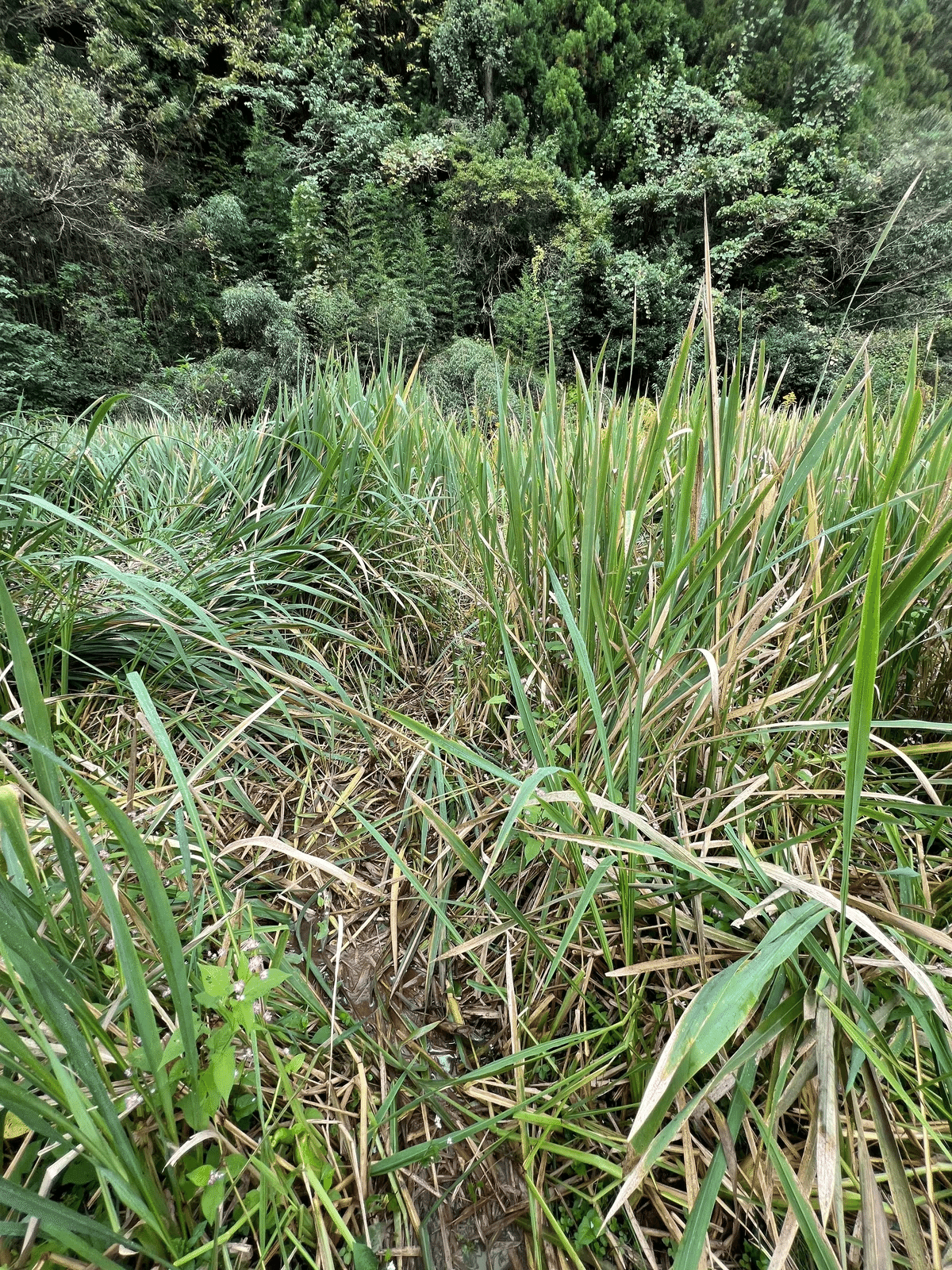
Discovering Makomodake: A Hidden Gem in Japan's Countryside
Have you ever heard of makomodake? Even though I've been a big fan of makomodake, it remains relatively unknown to most people, even in Japan. After spending a day in the mountains near the Ishikawa and Toyama prefecture border, helping to harvest this unique vegetable, I discovered it’s a true hidden gem in Japanese cuisine.
What is Makomodake?
Makomodake (also called makomotake by some) is the young, swollen stem of makomo, a water-loving plant in the grass family, which grows in muddy field. This swelling happens due to a fungus called ustilago esculenta. The edible part is the white stem that lies beneath the outer layers. It can be eaten raw but becomes sweet and tender when cooked. With its mild flavor, similar to bamboo shoots, it fits perfectly in soups, stir-fries, rice dishes, stews, curries, and even tempura deep-fry.


Nutritionally, makomodake is packed with fiber, protein, vitamins, minerals, and potassium. Its high fiber content is excellent for digestion, and the potassium is said to help lower blood pressure. In China and Taiwan, it's a more common ingredient, but it remains lesser-known in other parts of the world.
Sometimes you’ll find black spots on the white part of the makomodake, but don't worry—this is just the pigment from the fungus and is perfectly safe to eat. Interestingly, this pigment was historically used as a natural dye for eyebrows and teeth in Japan.
A Plant with Ancient Roots
Makomo has been around for millions of years—fossil evidence shows that it existed in its current form 60 million to 100 million years ago! This plant also has deep cultural and spiritual significance. There's a story about a Buddha weaving mats from makomo leaves to treat the sick, and another about feeding makomo leaves to a beloved elephant.
Even today, makomo leaves are used in sacred rituals at prominent shrines like Izumo Taisha, Usa Hachiman Shrine, and Kanda Myojin. It has also been used as a medicinal herb throughout history, earning its place as a “sacred grass.”
https://www.makomoya.com/shimenawa/
Across the globe, in North America, a similar plant produces what’s known as "wild rice." These seeds from makomo have been a staple food for Native American communities, who refer to it as manoomin, meaning "sacred seed." The fact that makomo is considered sacred across different cultures is fascinating and adds to its allure.
My Personal Connection with Makomodake
I first encountered makomo as a child when my grandmother would brew tea from its roasted leaves, touting its health benefits. I remember its grassy aroma and slightly nutty taste—it became a favorite of mine.
Later, as an adult, I discovered that the stem part of makomo plant, which my grandmother loved, is actually edible as a vegetable called makomodake. Whenever I saw it being sold, I couldn’t resist buying it, thinking about its health benefits and fondly remembering my grandmother. I’ve since become a big fan of makomodake, as it’s incredibly delicious.
Utilizing Fallow Rice Fields for Makomodake Cultivation
In Toyama Prefecture, there's a growing initiative to make use of fallow rice fields by cultivating makomodake. Since some farmers have stopped growing rice in these areas, makomodake is being introduced as an alternative crop to utilize the land. This is one reason why you might occasionally find makomodake in local markets or supermarkets in the region. Despite its health benefits, it's still relatively unknown and mostly enjoyed by a small group of vegetable enthusiasts.
A Day of Harvesting
On this particular day, I joined a group of six people, gathered by Chef Sawada from the French restaurant Au Mileu de la vie (https://aumilieudelavie.com/). The field belonged to a family friend of the chef, who needed help harvesting. Together, we chatted and laughed as we worked, but when we found large makomodake, we fell silent, focused on the task. After about an hour, each of us had baskets overflowing with makomodake.
Like rice, makomodake is grown in muddy fields, and harvesting it is hard work. It’s done by hand, using sickles, since the sharp leaves can cut skin if not handled properly. Harvesting in the slippery mud, with heavy baskets, is no easy task, but it’s deeply rewarding.


After the harvest, Chef Sawada treated us to cold makomo brown rice tea and a hearty pumpkin soup—exactly what we needed after the physical work. We then enjoyed a homemade bento, packed with makomodake dishes, like makomodake rice and sautéed makomodake, all of which were delicious and full of fresh, natural flavors.


Bringing Makomodake Home
I returned home with a lot of makomodake and immediately started cooking. I made miso soup, simmered dishes, pickles, and even tempura. The tempura, especially, was a hit—thinly sliced and fried, it turned out crisp and addictive, even better than potato chips! The makomodake rice reminded me of bamboo shoot rice, but with a slightly sweeter taste. I also made some pickled makomodake and kimchi to preserve the harvest and enjoy it over time.

A Vegetable Worth Sharing
Though it takes effort to harvest and remains relatively unknown outside niche markets, makomodake is packed with nutrition and versatility in the kitchen. With its rich history and health benefits, I believe makomodake deserves more attention, and I’m happy to have discovered it. If you ever come across it, give it a try—you might find yourself hooked on this ancient, sacred vegetable.
